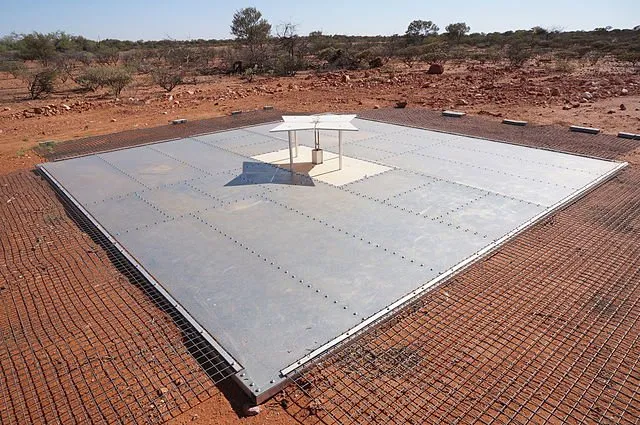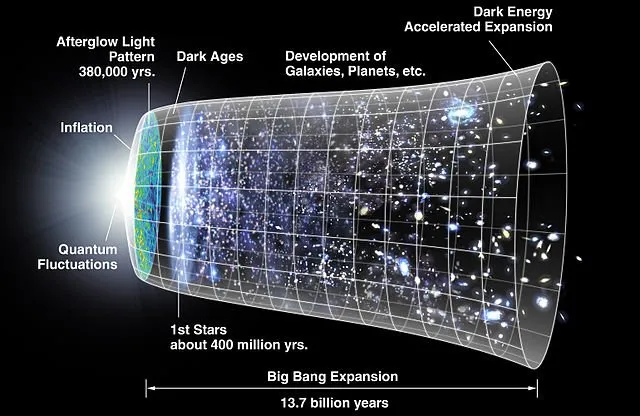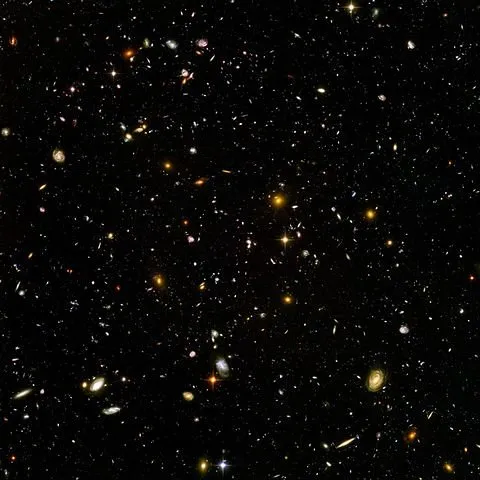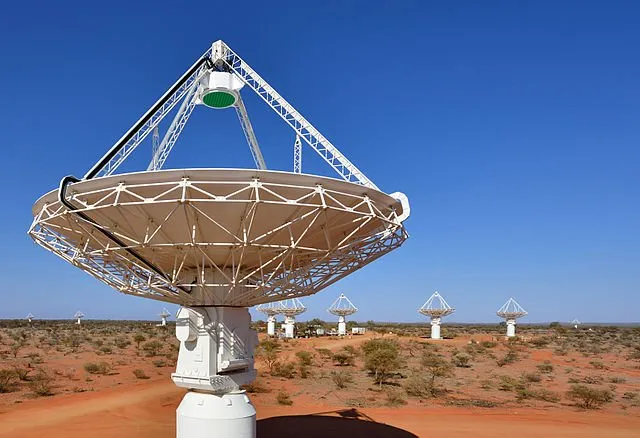Hydrogen is the most common gas in our universe, and it makes up to about 75% of the universe mass. It is consequently expected that studying hydrogen-related observables could allow for a better understanding of the fundamental characteristics of our universe.

[image credits: Wikipedia]
In this post, I discuss recent results of the EDGES experiment (shown in the picture on the left), a project investigating hydrogen signatures of the very early universe.
Some intriguing signals of the cosmic dawn epoch (i.e. the coolest period of the universe history for what concerns matter, that also corresponds to the moment at which the first stars appeared) have been published earlier this month. Physicists immediately took the opportunity to cook a dark matter explanation.
This however does not seem to work that greatly. And as usual, note that something stupid is hidden in the post ;)
THE BIG BANG THEORY IN A NUTSHELL
Standard cosmology relies on the Big Bang hypothesis in which our Universe started to exist more or less 13 billion years ago. After a very short period of inflation, one ends up with a super-hot cosmic soup of matter and energy, in which particle-antiparticle pairs are continuously created and annihilated.

[image credits: Wikipedia]
At the same time, the universe is expanding, which makes it cool down.
With the associated decrease in temperature, the dynamics in the cosmic soup changed, and after a short amount of time, for some reasons physicists are still trying to understand, baryons were generated and antimatter disappeared.
This is known as baryogenesis, which leads, at the end of the day, to the creation of neutrons and protons.
Within 10 minutes, neutrons and protons started to form the lightest atomic nuclei, namely deuterium, helium and lithium. And for the record, hydrogen was already there (a hydrogen nucleus is just a proton). This is what we call Big Bang nucleosynthesis.
After a few of hundreds of thousands of years of cool down and expansion, atomic nuclei and electrons recombined to form atoms. As a results, all matter in the universe was electrically neutral, and the light released at this time is still visible today.
With very few electrically charged particles, photons can indeed travel almost unperturbed within the universe. This is what we call the cosmic microwave background (or the CMB). It is very precisely measured, for instance, by the Planck experiment, which allows for getting information on what happened in the early days of the universe.
THE COSMIC DAWN
The above-described period is traditionally known as the Dark Age of the universe, as consequence of the fact that there was just no light other than the CMB and the famous 21.1cm hydrogen line.
This ‘line’ corresponds to the transition between the two hydrogen ground states with total spins respectively equal to 0 or 1. This is a crucial number as in the low temperature conditions of the universe at that time, it consists of the only observable hydrogen transition.
From there, gravity started to work, and the universe ended up in being comprised of huge clouds of hydrogen that then gravitationally collapsed to form the first stars.

[image credits: Wikipedia]
The ignition of the first stars marks the beginning of the Cosmic Dawn era.
By burning, those stars lit up the surrounding gas (mostly hydrogen) and ionized it again, protons and electrons being broken apart and ejected out of the neutral clouds.
After the reionization process being complete (i.e. roughly 1 billion years after the Big Bang), light of many different wavelengths have escaped and spread all around the Universe. Such a light is observable today.
However, who says charged particles also says that electromagnetism can now play a role again. Excited protons could interact with the CMB at very specific wavelengths, leaving thus imprints as dips in brightness at given points in the CMB spectrum.
By studying these dips and light from these early times (that comes from very far away in the universe as a consequence of the universe expansion), one hopes to get probes of this early reionization epoch. In particular, the 21cm line above-mentioned is the best hope for understanding what has gone on at that time.
CHASING DIPS WITH EDGES

[image credits: Wikipedia]
The EDGES experiment consists in a radio-telescope located in western Australia, far far away from anyhuman (radio-wave) activity.
Its goal is to focus on detecting the light associated with the 21.1cm hydrogen transition that is originating from the reionization epoch.
This is achieved through a broadband antenna covering the 50-100 MHz range, as this range corresponds to the frequency of light that should have been emitted during reionization.
By virtue of the expansion of the universe, light from very far was emitted long long long ago. This consists thus of the light we should search for. It is pretty challenging to detect it for varied reasons. First, because the initial frequency has been redshifted (this is simply a Doppler effect), so that the detected frequency is different from the emitted one. In addition, there are plenty of sources of radio-waves all along the way to us, which may swamp the signal.
RESULTS AND DISCUSSION
Despite of all complications, the EDGES experiment managed to observe two dips in the light energy spectrum. The first one suggests that the Cosmic Dawn occurred about 180.000.000 years after the Big Bang. However, a second dip was observed at about 250.000.000 years after the Big Bang. This corresponds to the period of time at which the first stars started to die and form the first black holes and supernovae.

[image credits: Wikipedia]
By analyzing the magnitude of the dip, it has been found that hydrogen has been absorbing much more radiation than expected. We talk about a factor of 2 difference, more or less, when comparing data to predictions.
We have here a new puzzle!
This indeed suggests that the universe was much colder than expected. And this is where dark matter comes in. At the same moment of the universe history, dark matter is at its coldest phase as well. It may thus cool down the hydrogen gas, which could then induce a larger absorption in the spectrum.
However, in order to reproduce data, the dark matter properties must be such that it becomes very hard to accommodate any other dark matter experimental results. Theoretical options are nonetheless available, sa soon as dark matter is made of several species of particles. More information on this can be found in this research article.
For further pieces of information, please have a look to this (shamefully non open access) article on the EDGES results.
SteemSTEM is a community-driven project that now runs on Steem for more than 1.5 year. We seek to build a community of science lovers and to make the Steem blockchain a better place for Science Technology Engineering and Mathematics (STEM).
More information can be found on the @steemstem blog, on our discord server and in our last project report. Please also have a look on this post for what concerns the building of our community.